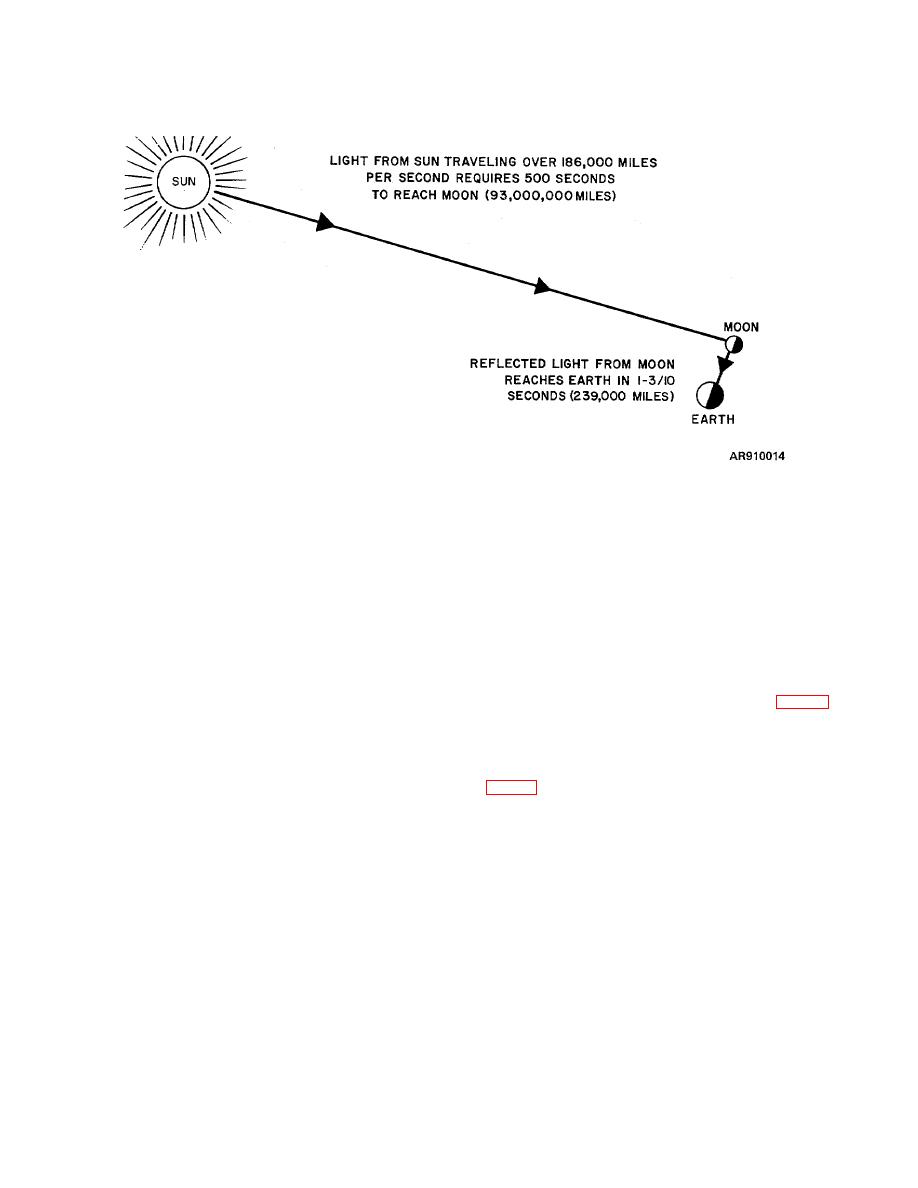 |
|||
|
|
|||
|
|
|||
| ||||||||||
|
|
 TM 9-258
Figure 2-8. Speed of light
b. Light travels so fast that it was a long time before
to establish the speed of light to an exactness beyond
that required for practical usage.
its speed could be measured. Galileo Galilei (1564-
e. The speed of light is accepted as 186, 330 miles
1642) tried to measure light velocity by means of blinking
per second. This is the figure used in computations
lanterns on widely distant hilltops but, as the speed was
involving the speed of light. The speed of light obtained
too great to be measured by this method, the velocity of
by the important methods of the past 70 years ranges
light was presumed to be infinite.
c. Thirty-four years after Galileo's death, Olaus
from 186, 410 to 186, 726 miles per second.
Roemer (1644-1710) determined the approximate speed
2-3.
Wavelength and Frequency
of light by astronomical means based on observations
a. Wavelength. The wavelength is the distance
which showed the amount of time required for the light of
from the crest or top of one wave to the crest of the next,
the planet Jupiter to cross the orbit of the earth.
or from any point on one wave to the corresponding
d. It was nearly 200 years more before scientists
point, in the same phase on the next wave (fig 2-9). The
were able to measure a speed so great as that of light by
velocity of all forms of electromagnetic waves in vacuum
laboratory methods.
In 1849, Fizeau (1819-1896)
is the same, that is, the speed of light is approximately
measured the velocity of light, using intermittent flashes
186, 000 miles per second. The wavelengths, however,
of light sent out by a source equipped with a swiftly
vary greatly
moving toothed wheel and reflected back to the
observer. Other methods, employing the reflections
from rotating mirrors and prisms, have since been used
2-7
|
|
Privacy Statement - Press Release - Copyright Information. - Contact Us |